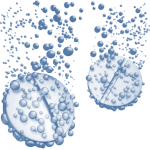Tridax procumbens Linn nanogel as alternative treatment for rheumatoid arthritis
Omkar A Patil
Abstract:
Nanogels are designed to spontaneously incorporate biologically active molecules through the formation of salt bonds, hydrogen bonds, or hydrophobic interactions. Nanogels can be used for the treatment of topical bacterial and fungal infection skin cancer, inflammation and bone regeneration etc. The present research has been undertaken with the aim to formulate and evaluate the antibacterial nanogel of Tridex procumbens Linn. Nanogel were prepared by using carbopol 940, carbopol 934, ethanol, methyl paraben, propyl paraben, EDTA (Ethylenesiaminetetraacetic acid), triethanolamine. FTIR (Fourier-transform infrared) analysis and DSC (Differential Scanning Calorimetry) study was performed to ensure the compatibility between plant extract and excipients. The prepared nanogel were evaluated for particle size analysis and zeta potential and other parameter like pH, viscosity, spreadibility, extrudability, drug content also determined. In vitro release of all formulation was found between 75-97.88% formulated by using different carbopol. Optimized batch F4 shows acceptance result for all parameter and having release up to 97.88% within 5 h. Particle size of optimized batch was found to be 246 nm. The results indicated the prepared nanogel is safe and effective to treat rheumatoid arthritis.
Keywords: Tridex Procumbens, Rheumatoid Arthritis, Nanogel, Zeta Potential, Particle Size.



